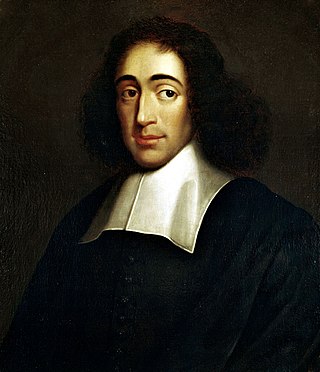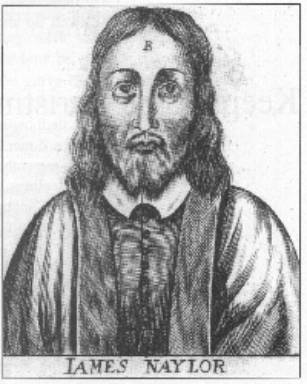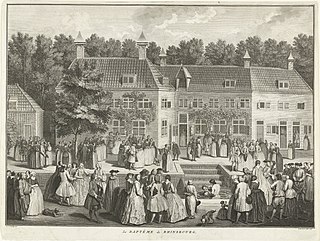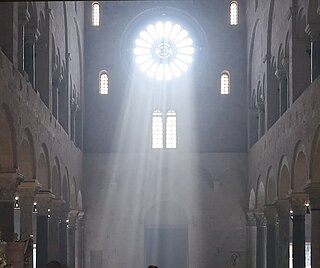
Baruch (de) Spinoza, also known under his Latinized pen name Benedictus de Spinoza, was a philosopher of Portuguese-Jewish origin. A forerunner of the Age of Enlightenment, Spinoza significantly influenced modern biblical criticism, 17th-century rationalism, and Dutch intellectual culture, establishing himself as one of the most important and radical philosophers of the early modern period. Influenced by Stoicism, Thomas Hobbes, René Descartes, Ibn Tufayl, and heterodox Christians, Spinoza was a leading philosopher of the Dutch Golden Age.
Panentheism is the belief that the divine intersects every part of the universe and also extends beyond space and time. The term was coined by the German philosopher Karl Krause in 1828 to distinguish the ideas of Georg Wilhelm Friedrich Hegel (1770–1831) and Friedrich Wilhelm Joseph Schelling (1775–1854) about the relation of God and the universe from the supposed pantheism of Baruch Spinoza. Unlike pantheism, which holds that the divine and the universe are identical, panentheism maintains an ontological distinction between the divine and the non-divine and the significance of both.

James Nayler was an English Quaker leader. He was among the members of the Valiant Sixty, a group of early Quaker preachers and missionaries. In 1656, Nayler achieved national notoriety when he re-enacted Christ's Palm Sunday entry into Jerusalem by entering Bristol on a horse. He was imprisoned and charged with blasphemy.

Inward light, Light of God, Light of Christ, Christ within, That of God, Spirit of God within us, Light within, and inner light are related phrases commonly used within the Religious Society of Friends (Quakers) as metaphors for Christ's light shining on or in them. It was propagated by the founder of the Quaker movement, George Fox, who "preached faith in and reliance on 'inward light' ". The first Quakers were known to sit in silence and meditate on the words of the Bible until they felt the inward light of God shining upon them and the Holy Spirit speaking. The concept was highly important to early Quakers, who taught: "God reveals Himself within each individual's conscience and consciousness by the Holy Spirit, Christ Himself being the Light to illuminate man's sinfulness and lead in the way of truth and righteousness. ... this light is in all men by the grace of God to lead them to Christ, and that the same light will give daily guidance to the Christian."

The Tractatus Theologico-Politicus (TTP) or Theologico-Political Treatise, is a 1670 work of philosophy written in Latin by the Dutch philosopher Benedictus Spinoza (1632–1677). The book was one of the most important and controversial texts of the early modern period. Its aim was "to liberate the individual from bondage to superstition and ecclesiastical authority." In it, Spinoza expounds his views on contemporary Jewish and Christian religion and critically analyses the Bible, especially the Old Testament, which underlies both. He argues what the best roles for state and religion should be and concludes that a degree of democracy and freedom of speech and religion works best, such as in Amsterdam, while the state remains paramount within reason. The goal of the state is to guarantee the freedom of citizens. Religious leaders should not interfere in politics. Spinoza interrupted his writing of his magnum opus, the Ethics, to respond to the increasing intolerance in the Dutch Republic, directly challenging religious authorities and their power over freedom of thought. He published the work anonymously, in Latin, rightly anticipating harsh criticism and vigorous attempts by religious leaders and conservative secular authorities to suppress his work entirely. He halted the publication of a Dutch translation. One described it as being "Forged in hell by the apostate Jew working together with the devil". The work has been characterized as "one of the most significant events in European intellectual history", laying the groundwork for ideas about liberalism, secularism, and democracy.
Edward Burrough (1634–1663) was an early English Quaker leader and controversialist. He is regarded as one of the Valiant Sixty, who were early Quaker preachers and missionaries.

In Christian history, the Collegiants, also called Collegians, were an association, founded in 1619 among the Arminians and Anabaptists in Holland. They were so called because of their colleges (meetings) held the first Sunday of each month, at which everyone had the same liberty of expounding the scripture and praying.
Adam Boreel was a Dutch theologian and Hebrew scholar. He was one of the founders of the Amsterdam College; the Collegiants were also often called Boreelists. Others involved in the Collegiants were William Ames, Daniel van Breen, Michiel Coomans, Jacob Otto van Halmael and the Mennonite Galenus Abrahamsz de Haan.

Petrus Serrarius was a millenarian theologian, writer, and also a wealthy merchant, who established himself in Amsterdam in 1630, and was active there until his death. He was born "into a well-to-do Walloon merchant family by name of Serrurier in London." He has been called "the dean of the dissident Millenarian theologians in Amsterdam".

In theology, divine light is an aspect of divine presence perceived as light during a theophany or vision, or represented as such in allegory or metaphor.
Thomas Pierce or Peirse (1622–1691) was an English churchman and controversialist, a high-handed President of Magdalen College, Oxford, and Dean of Salisbury.
Willem Sewel was a Dutch Quaker historian, of English background.
William Caton (1636–1665) was an early English Quaker itinerant preacher and writer.
William Ames was an early English itinerant Quaker preacher and writer. He joined the Quakers in 1655 at Dublin, having been a Baptist minister in Somerset, and afterwards an officer in the parliamentary army. He settled at Amsterdam in 1657, where he was tolerated, though once confined for a short time as a lunatic. Ames zealously preached to the Collegiants, and although initially in accord, they later fell out. He traveled in Germany and was favorably received by Charles I Louis, Elector Palatine. Ames returned to England in 1662, was sent to Bridewell prison for attending a Quaker meeting, and died before the end of the year.
Richard Farnworth or Farnsworth was an English Quaker writer of tracts.
This is a timeline of philosophy in the 17th century.
Sarah Blackborow was the English author of religious tracts, which strongly influenced Quaker thinking on social problems and the theological position of women. She was one of several prominent female activists in the early decades of the Society of Friends, notable also for originating a scheme to distribute aid to London prisoners.
Humphrey Smith was an English Quaker preacher.
John Stubbs (c.1618–1675) was an itinerant English Quaker minister and author who engaged in a well-known debate with Roger Williams in Rhode Island.

The Epistolae are the correspondence of the Dutch philosopher Benedictus de Spinoza with a number of well-known learned men and with Spinoza's admirers, which Spinoza's followers in Amsterdam published after his death in the Opera Posthuma.









